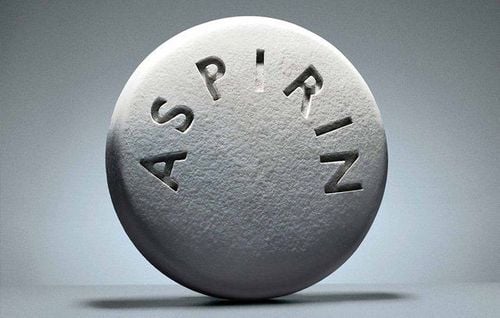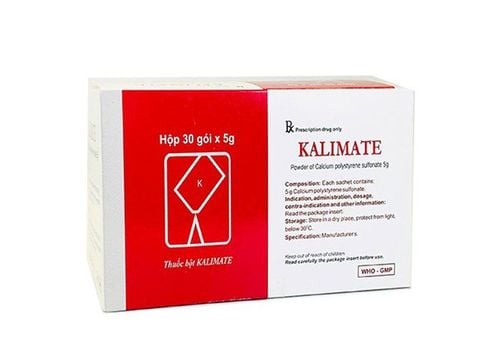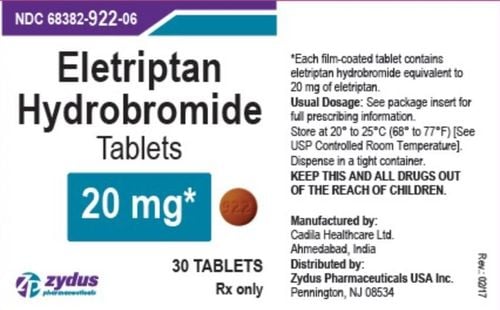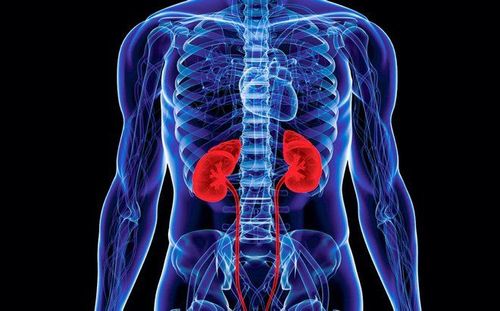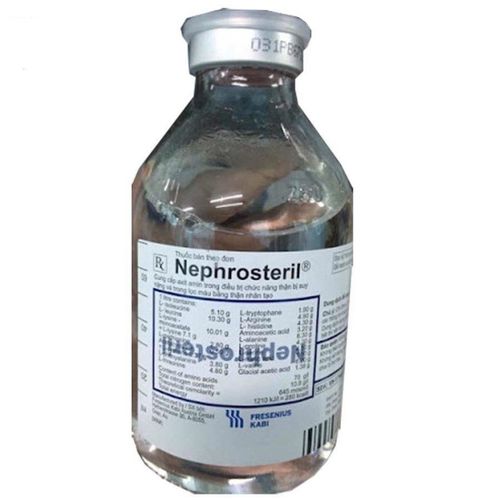This is an automatically translated article.
The article was professionally consulted with Specialist Doctor II Nguyen Quoc Viet - Interventional Cardiologist - Department of Medical Examination & Internal Medicine - Vinmec Danang International General Hospital.When the functioning of the kidneys is impaired, it will affect health, including life. In some cases, patients have to undergo hemodialysis to replace normal kidney function, but a possible complication is blood pressure change during hemodialysis, also known as hypotension during the procedure. blood filtration.
1. The role of hemodialysis
The kidneys are a large organ in the body, a part of the urinary system located on both sides of the spine, right in the middle of the back, with the function of filtering blood, keeping the balance of water and minerals in the blood and helping the body control get blood pressure. While healthy kidneys have several functions in the body, the best known job is to produce urine. When kidney function drops below 10% to 15%, the kidneys are no longer able to filter blood and make urine. This causes toxins to build up in the body along with excess fluid. Fortunately, we live in a time when there are treatments and medications that can replace kidney function and keep the body alive.One type of renal replacement therapy - that is, a treatment that replaces kidney function - is hemodialysis. Hemodialysis (HD) is a therapy that filters waste, removes excess fluid, and balances electrolytes (sodium, potassium, bicarbonate, chloride, calcium, magnesium, and phosphate).
It is also an effective treatment for people with end-stage kidney disease. However, hemodialysis alone will not provide definitive treatment for people with kidney failure. Diet and fluid restriction are required, and medications may be needed to replace other kidney functions, such as regulating blood pressure and stimulating red blood cell production to prevent anemia.
2. What is hypotension during dialysis?
2.1. What are the features of dialysis? Hemodialysis is a method of removing from the blood small molecular weight particles, which are metabolic residues or endogenous or exogenous toxins and excreting water, in order to restore blood homeostasis. body caused by kidney failure. Dialysis can only replace the excretory function of the kidney, but not the endocrine function of the kidney. Therefore, it is still necessary to combine dialysis with the correction of disorders caused by impaired endocrine function of the kidneys, such as anemia, hypertension, and calcitriol deficiency. Dialysis methods include: peritoneal dialysis, extracorporeal dialysis, continuous dialysis...Current dialysis methods include:
Peritoneal dialysis Peritoneal dialysis: blood purification method The peritoneal cavity is used as a filter, the peritoneal cavity is the filtrate cavity, and the blood cavity is the blood flowing in the blood vessels of the peritoneum. Acute peritoneal dialysis is usually the choice when hemodialysis is not available, or the patient has a contraindication to hemodialysis due to severe cardiovascular disease, hemodynamic instability, or coagulopathy that does not permit the use of heparin.
Acute peritoneal dialysis is indicated when acute renal failure or severe progression of chronic renal failure has the following factors: blood potassium >= 6.5 mmol/l; Blood urea >=30 mmol/l; Blood pH >= 7.2; volume overload threatens acute pulmonary edema; acute poisoning with certain substances such as barbiturates, heavy metals, to remove these toxins from the patient's blood.
Dialysis by artificial kidney Artificial kidney is a method of filtering blood outside the body, by creating a circulation outside the body, leading the blood to the filter to filter waste products of metabolism and excess water, and then the blood. is returned to the body. Indications for acute hemodialysis in cases of acute renal failure or acute deterioration of renal function in chronic renal failure with the following factors: Blood potassium >6.5 mmol/l; Blood urea >30mmol/l; blood pH < 7.2; Volume overload threatens acute pulmonary edema.
Hemodialysis by acute artificial kidney is also indicated in acute poisoning with certain substances such as barbiturates, heavy metals, to remove toxins from the patient's blood. Cyclic hemodialysis is indicated in end-stage renal failure, glomerular filtration rate <15 ml/min.

Advanced dialysis techniques as well as machinery and equipment have made great progress, greatly improving the survival rate, prolonging the patient's life as well as the quality of life. Despite this, the mortality rate of patients with end-stage CKD remains high, as this group of patients has a higher risk of cardiovascular disease than the general population. Approximately 50% of deaths from end-stage renal disease are due to cardiovascular causes. The most common cardiovascular events during dialysis are attributed to changes in blood pressure during dialysis, including hypotension and hypertension. Blood pressure variability is a major cause of death in patients with end-stage renal disease.
According to Emily's criteria, hypotension occurs when there are symptoms in 1 of the following 4 situations:
Maximum blood pressure is reduced by ≥10mmHg compared to the initial blood pressure, accompanied by symptoms of hypotension such as: dizziness, dizziness, nausea, vomiting, sweating, convulsions, delirium, confusion. The systolic blood pressure decreased by ≥10 mmHg in patients with baseline systolic blood pressure <100 mmHg. systolic blood pressure <100 mmHg in patients with baseline systolic blood pressure <150 mmHg. systolic blood pressure <110 mmHg in patients with baseline systolic blood pressure >150 mmHg. In dialysis, a common complication is intravascular hypotension and takes a long time to recover from a hemodialysis session. Intravenous hypotension, defined by systolic blood pressure <90 mmHg and intravascular impairment > 30 mmHg, occurred in nearly 8% of hemodialysis sessions. Intravenous hypotension can be caused by aggressive ultrafiltration in response to alternating weight gain, can lead to myocardial shock and arrhythmias, and is associated with an increased risk of death. Long recovery times after a course of treatment are also common. In DOPPS (Dialysis Outcomes and Practice Models Study), recovery time was 2 to 6 hours for 41% of hemodialysis patients and longer than 6 hours for 27%; Recovery time is linearly associated with increased risk of death and hospitalization. Importantly, both a drop in blood pressure and a feeling of exhaustion or exhaustion were identified by patients as more important outcomes than death or hospitalization. Intensive hemodialysis can reduce the likelihood of intravascular hypotension. In the Regular Dialysis Network trial, the short day and night schedule reduced the probability of intravascular hypotension by 20% and 68%, respectively, for 3 sessions per week. Due to the lower ultrafiltration volume and/or rate, intensive hemodialysis may reduce intrahepatic blood pressure variability. In a cross-sectional study, a short day and night schedule was associated with slower ultrafiltration and less dialysis-induced shock than 3 sessions per week. In FREEDOM (After daily rehabilitation, economics, and dialysis outcomes), a prospective cohort study of short daily hemodialysis, Recovery time was reduced at 12 months from 8 hours down to 1 hour, per protocol analysis. Recovery time from nocturnal hemodialysis can be several minutes. In conclusion, intensive hemodialysis can improve the tolerability of hemodialysis treatment by reducing the risk of intravascular hypotension and reducing the recovery time after hemodialysis.
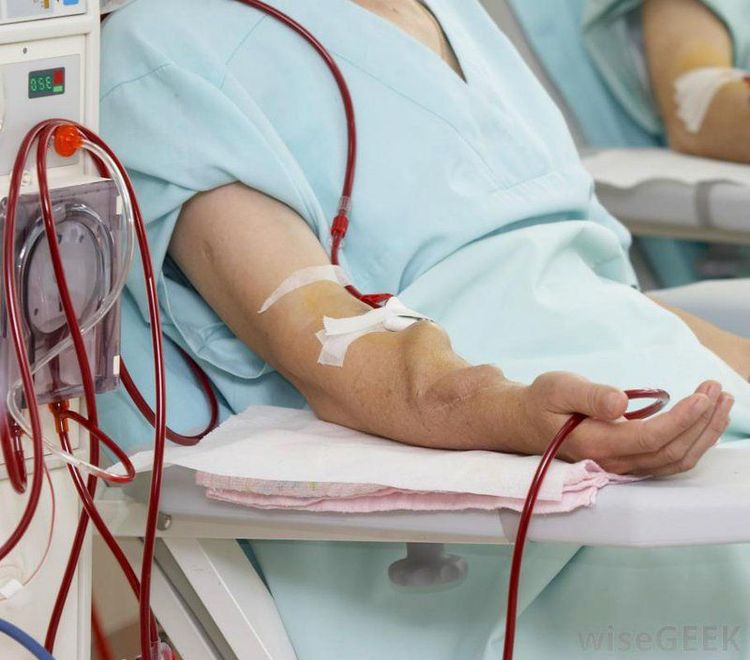
Ultrafiltration volume is usually plasma volume or greater, so maintaining plasma volume during hemodialysis requires interstitial fluid mobilization. If the ultrafiltration rate exceeds the plasma replenishment rate (eg, at the end of a dialysis session, when the plasma refill rate is lower), hemodynamic instability and related symptoms may occur. Impaired sympathetic activity can lead to negative myocardial contractility and inappropriate vasodilation, thereby exaggerating intravascular hypotension.
Active ultrafiltration may be an iron-inducing factor in the pathogenesis of intravascular hypotension. With the usual hemodialysis schedule, especially after a 72-hour interval between consecutive dialysis sessions, it may not be possible to achieve dry weight for 3 to 4 hours without an aggressive ultrafiltration rate setting. . There is ample evidence that aggressive ultrafiltration induces myocardial shock, or subclinical myocardial ischemia, which can lead to angina, arrhythmias, hypotension, and progressive cardiomyopathy. In a post hoc analysis of the Hemodialysis Study (HEMO), adjusted risk ratio (HR) of all-cause and cardiovascular mortality for ultrafiltration rates 13 versus 10 mL /kg/h were 1.59 (95% CI [CI], 1.29-1.96) and 1.71 (95% CI, 1.23-2.38), respectively.
2.3 Risk factors for low blood pressure on dialysis Older people Patients on dialysis for a long time Diabetic patients Female obesity Patients who gain excessive weight between two consecutive dialysis sessions, patients need remove large amounts of fluid or use an ultrafiltration machine Patient dry weight is too low Using antihypertensive drugs before dialysis Other causes such as cardiovascular disease, infection...
3. Prevention of hypotension in dialysis
The first thing is to prevent the above risks. And here are some helpful tips:Don't eat and drink before dialysis Don't take blood pressure medication before dialysis Maintain a reasonable weight, don't let weight gain too much between dialysis sessions. When the amount of fluid removed is less, the circulatory system also has to work less hard. Your doctor will adjust the amount of dialysis to match, with higher sodium If these methods fail, talk to your doctor about increasing dry weight. If all of the above has been done by the patient but there is no improvement, the patient's cardiovascular system should be examined. The doctor will consider whether to use the drug midorine or not. If the condition persists, a switch to peritoneal dialysis or home dialysis may be needed.

Dialysis patients treating end-stage chronic kidney failure at Vinmec will be guaranteed a strict, accurate and safe process with the HDF online hemodialysis method on the new generation 5008S machine system. This is an advanced method in the world that helps to eliminate large amounts of substances with average molecular weight accumulated in patients with chronic renal failure, stabilize blood pressure, and reduce complications of β2-microglobuline deposition. . Patients will no longer feel itching, aching limbs, bone and joint pain, sensory disturbances in peripheral nerves compared with hemodialysis by other methods.
Please dial HOTLINE for more information or register for an appointment HERE. Download MyVinmec app to make appointments faster and to manage your bookings easily.






